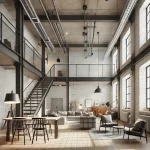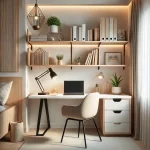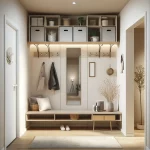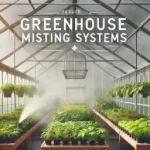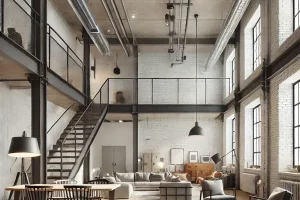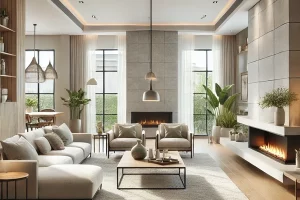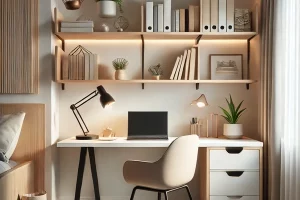How to build a conservatory greenhouse: A conservatory greenhouse is a special glass room where you can grow plants. It’s often attached to your house, making it easy to enjoy your plants anytime.
Why is it Important for Plant Lovers? If you love plants, this is like a dream room for you! You can grow plants all year, even when it’s cold outside. It’s also a great place to relax and enjoy nature without leaving your home.
What is a Conservatory Greenhouse?
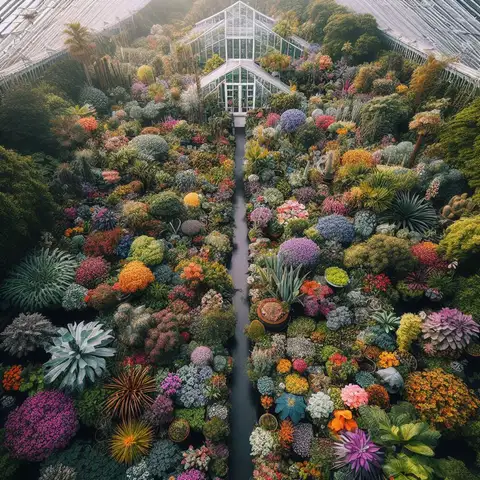
A Conservatory Greenhouse is a special kind of greenhouse that is often more decorative and can sometimes be attached to a house. It’s not just a place to grow plants; it can also be a beautiful space to relax in.
Definition and Basic Concept
A conservatory greenhouse is designed to serve dual purposes. First, it acts as a greenhouse where you can grow plants, herbs, and even some fruits and vegetables. Second, it’s often built to be a lovely space where you can sit and enjoy nature without being affected by the weather outside.
How It Differs From Other Types of Greenhouses
What sets a conservatory greenhouse apart from other types is its design. While most greenhouses are built for the sole purpose of growing plants, a conservatory greenhouse is often more elaborate, with aesthetic features like ornate windows, comfortable seating, and sometimes even heating or cooling systems for year-round use.
How to Build a Conservatory Greenhouse
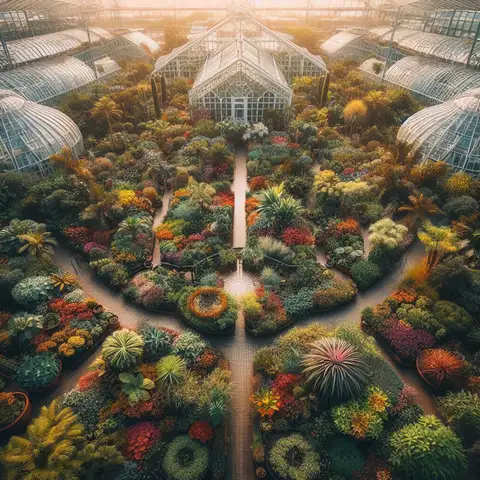
Building a Conservatory Greenhouse is a fun project that can give you a lovely space to grow plants and relax. Here’s how to do it:
Materials Needed
- Wood or Metal Frames: For the structure
- Glass or Polycarbonate Panels: For the walls and roof
- Screws and Nails: To put everything together
- Sealant: To make it weatherproof
- Soil and Planters: For your plants
- Irrigation System: For watering the plants
- Heating and Cooling System: Optional for temperature control
- Furniture: Optional for seating and tables
Step-by-Step Guide
- Plan Your Space: Decide where you want to build your conservatory greenhouse and how big it should be.
- Get Permits: Check local laws to see if you need any permits to build.
- Prepare the Ground: Clear the area where you’ll build and level the ground.
- Build the Frame: Use wood or metal to build the frame. Make sure it’s sturdy!
- Install the Walls and Roof: Put in the glass or polycarbonate panels. Use a sealant to make sure it’s all weatherproof.
- Set Up Irrigation: Install an irrigation system to water your plants.
- Add Soil and Planters: Fill planters with soil and place them in your greenhouse.
- Temperature Control: If you want, you can add a heating and cooling system.
- Furnish: Add any furniture like chairs or tables if you want.
- Plant: Finally, add your plants and enjoy!
Conservatory Greenhouse Cost
Building a Conservatory Greenhouse can cost different amounts based on what you want. Here’s what you need to know:
Price Ranges
- Low-End: Around $5,000 to $10,000
- Mid-Range: About $10,000 to $20,000
- High-End: Over $20,000
Factors Affecting the Cost
- Size: Bigger means more money.
- Materials: Glass costs more than plastic.
- Extras: Heating, cooling, and fancy furniture can add up.
- Labor: If you hire people, it will cost more.
Comparison with Walipini Greenhouse Cost
- Walipini Greenhouse: Usually cheaper, around $300 to $2,000.
- Conservatory Greenhouse: More expensive but often fancier and bigger.
Common Problems in Conservatory Greenhouse
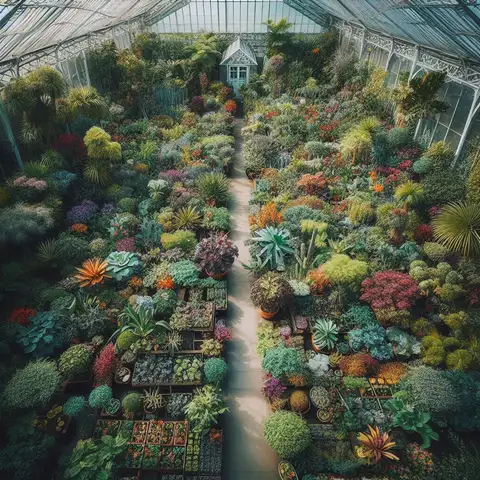
Owning a Conservatory Greenhouse is a dream for many garden lovers. But, like all good things, it comes with its own set of challenges. Here are some common problems you might face and how to solve them.
Moisture Control
- The Problem: Too much moisture can lead to mold and rot, which is bad for plants.
- The Solution:
- Use a dehumidifier to pull water out of the air.
- Open windows and vents during the day to let fresh air in.
- Use gravel or sand on the floor to soak up extra water.
Ventilation
- The Problem: Poor air circulation can lead to weak and sickly plants.
- The Solution:
- Install exhaust fans at the top of the greenhouse to pull out hot air.
- Use oscillating fans to move air around the plants.
- Make sure vents are open and unblocked.
Pests
- The Problem: Bugs like aphids and spider mites can harm your plants.
- The Solution:
- Use insecticidal soap or neem oil as a safe spray.
- Introduce natural predators like ladybugs.
- Keep the greenhouse clean to prevent pests from coming in.
Bonus Tip: Regular Checks
- Make it a habit to check your greenhouse regularly. Look for signs of too much water, poor air, or bugs. The sooner you find a problem, the easier it is to fix it!
Conservatory Greenhouse Plant: What Grows Best?
A Conservatory Greenhouse is not just a pretty space; it’s also a great place to grow a wide range of plants. But what types of plants are best suited for this kind of greenhouse? Let’s find out!
Tropical Plants
- Why They’re Good: These plants love the warm, humid conditions that a conservatory can offer.
- Examples: Orchids, Bromeliads, and Ferns.
Herbs
- Why They’re Good: Herbs need lots of light, which a conservatory can provide.
- Examples: Basil, Mint, and Rosemary.
Citrus Trees
- Why They’re Good: These trees need a lot of sun and can grow well in large pots.
- Examples: Lemon, Lime, and Orange trees.
Succulents
- Why They’re Good: They need less water and love lots of light.
- Examples: Aloe Vera, Cacti, and Jade plants.
Veggies
- Why They’re Good: You can grow veggies year-round!
- Examples: Tomatoes, Peppers, and Lettuce.
Flowers
- Why They’re Good: For color and scent.
- Examples: Roses, Lilies, and Daisies.
Tips for Choosing Plants
- Light Needs: Make sure the plants you choose match the light levels your conservatory gets.
- Space: Some plants need more room to grow, so plan accordingly.
- Climate: Make sure the plants you choose can handle your local weather if you plan to move them outside later.
Conservatory Greenhouse Interior: Design for Success
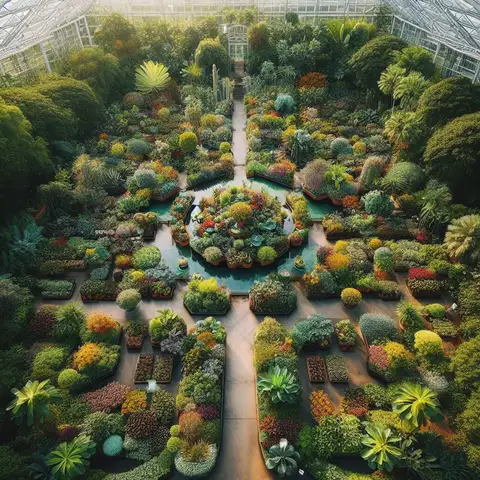
The interior of your Conservatory Greenhouse can make or break your gardening experience. Here’s how to design it for maximum efficiency:
Shelving and Storage
- Why It’s Important: To keep tools and supplies organized.
- Tips: Use vertical space and consider adjustable shelves.
Seating Area
- Why It’s Important: For relaxation and enjoying your plants.
- Tips: Add a small bench or a couple of chairs.
Flooring
- Why It’s Important: Easy cleaning and good drainage.
- Tips: Consider gravel or tiles that are easy to hose down.
Climate Control
- Why It’s Important: For plant health.
- Tips: Install a small fan for air circulation and consider a heater for winter.
Conservatory Greenhouse Kit: Buyer’s Guide
Buying a Conservatory Greenhouse Kit can save you time and effort. Here’s what to look for:
Complete Set
- Why It’s Important: To make sure you have all the parts you need.
- Tips: Check the list of included items before buying.
Quality Materials
- Why It’s Important: For durability and longevity.
- Tips: Look for kits made from high-quality metals and glass or polycarbonate.
Easy Instructions
- Why It’s Important: To make the building process smooth.
- Tips: Look for kits with clear, step-by-step guides.
Small Conservatory Greenhouse: Is It Right for You?
A Small Conservatory Greenhouse can be a great option for many, but it has its pros and cons.
Pros:
- Easy to Manage: Smaller space means less work.
- Cost-Effective: Generally cheaper to set up and maintain.
- Quick Setup: Usually faster to build.
Cons:
- Limited Space: You may outgrow it quickly.
- Less Variety: Fewer types of plants can be grown.
Conservatory Greenhouse Ideas: Spark Your Imagination
When it comes to designing your Conservatory Greenhouse, the sky’s the limit! Here are some creative and functional ideas to make your space truly unique.
Hanging Gardens
- Why It’s Cool: Saves floor space and adds visual interest.
- How to Do It: Use hanging planters or install a hanging rod for potted plants.
Water Feature
- Why It’s Cool: Adds tranquility and can help with humidity.
- How to Do It: Consider a small fountain or even a koi pond.
Herb Wall
- Why It’s Cool: Easy access to fresh herbs.
- How to Do It: Use vertical planters attached to one wall and plant your favorite herbs.
Reading Nook
- Why It’s Cool: A peaceful place to read surrounded by plants.
- How to Do It: Add a comfy chair and a small bookshelf.
Fairy Garden
- Why It’s Cool: Adds a whimsical touch.
- How to Do It: Create a mini garden with small plants and fairy garden accessories.
Greenhouse Café
- Why It’s Cool: Enjoy a cup of tea or coffee in your greenhouse.
- How to Do It: Set up a small table and chairs, and maybe a coffee maker or teapot.
Seasonal Themes
- Why It’s Cool: Keeps the greenhouse looking fresh.
- How to Do It: Change out decorations, plant types, or color schemes with the seasons.
Art Studio
- Why It’s Cool: A serene place to paint or draw.
- How to Do It: Bring in an easel and art supplies.
Conservatory Greenhouse Builders: How to Choose the Right One
When it comes to building your dream conservatory greenhouse, choosing the right builder is crucial. Here are some tips to help you make the best choice.
Check Credentials
- Why It’s Important: Ensures the builder is qualified and legitimate.
- How to Do It: Look for certifications, licenses, and memberships in professional organizations.
Read Reviews
- Why It’s Important: It gives you an idea of the builder’s reputation.
- How to Do It: Check online reviews and ask for references.
Ask for a Portfolio
- Why It’s Important: It helps you see the quality and style of their work.
- How to Do It: Most builders have a portfolio of past projects, either online or in print.
Get Multiple Quotes
- Why It’s Important: It helps you understand the market rate and choose a builder within your budget.
- How to Do It: Always get at least three quotes for comparison.
Visit Past Projects
- Why It’s Important: It allows you to see their work firsthand.
- How to Do It: Ask the builder if you can visit some of their completed projects.
Check Availability
- Why It’s Important: Ensures they can work within your timeline.
- How to Do It: Ask about their schedule and how long the project will take.
Ask About Warranties
- Why It’s Important: Provides peace of mind.
- How to Do It: Ask what kind of warranties or guarantees they offer on their work.
Communication Style
- Why It’s Important: Ensures you’re on the same page throughout the project.
- How to Do It: Make sure they communicate clearly and are easy to reach.
Conservatory Greenhouse Attached To House: Pros and Cons
Having a conservatory greenhouse attached to your house can be a dream come true for plant lovers. But like any home addition, it has its ups and downs. Here’s what you need to know.
Advantages:
- Easy Access: You can easily move between your home and the greenhouse.
- Climate Control: Your home’s heating and cooling systems can extend to the greenhouse.
- Space-Saving: No need for a separate piece of land.
- Aesthetic Appeal: Adds beauty and value to your home.
- Multi-Functional: Can serve as a sunroom or extra living space.
Disadvantages:
- Cost: Building an attached greenhouse can be expensive.
- Permits: You’ll need building permits, which can be a hassle.
- Maintenance: Requires regular upkeep to prevent issues like mold.
- Energy Use: This may increase your home’s energy consumption.
- Limited Expansion: You may need more room for future expansion.
Building a conservatory greenhouse is a big deal. You have to think about a lot of things. Should it be part of your house or stand-alone? What plants will you grow? Who will build it?
All these choices matter. They decide how happy you’ll be with your greenhouse for years to come. So, take your time. Look up all the info you can. And make a greenhouse that you and your plants will love.
FAQs
Q1: What is a Conservatory Greenhouse?
Answer: It’s a special room made of glass where you can grow plants. It’s often part of your house.
Q2: How is it Different from a Regular Greenhouse?
Answer: It’s usually attached to your home and can be used as an extra room.
Q3: Is it Costly to Make One?
Answer: The price can change a lot. It depends on how big it is and what it’s made of. Always plan your budget.
Q4: What Plants Can I Grow?
Answer: You can grow many kinds of plants, like flowers, herbs, and even veggies!
Q5: Do I Need Special Permission to Build It?
Answer: Yes, you usually need a building permit. Always check with the people in charge of your town.
Q6: What Problems Might I Face?
Answer: You might have issues with too much water, not enough air, or bugs. You’ll need to take care of these.
Q7: Can I Build it Myself?
Answer: You can use a DIY kit for small ones, but for big projects, it’s good to get help from experts.
Q8: How Do I Pick a Good Builder?
Answer: Find someone who has made these before. Ask to see work and talk to other customers.
Q9: Will it Use a Lot of Energy?
Answer: It might use more electricity or gas, so think about using things that save energy.
Q10: Can I Turn My Old Conservatory into a Greenhouse?
Answer: Yes, you can! You’ll need to make some changes so your plants will be happy.
